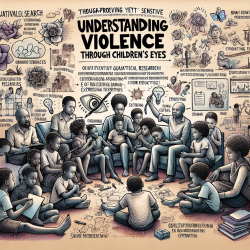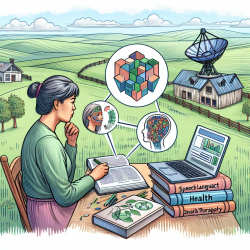Understanding Violence Through Children's Eyes
As a speech-language pathologist passionate about improving children's outcomes, understanding how children and adolescents conceptualize violence is crucial. A recent systematic review and meta-synthesis of qualitative studies from sub-Saharan Africa sheds light on this complex issue. The study, titled What do we know about how children and adolescents conceptualise violence? A systematic review and meta-synthesis of qualitative studies from sub-Saharan Africa, explores the nuanced ways in which young individuals perceive violence, which can significantly differ from established international definitions.
Key Findings
The research synthesized data from 30 studies across 12 sub-Saharan African countries, revealing six overarching themes in how children and adolescents conceptualize violence:
- Adults abusing or neglecting responsibility
- Sexual violence from peers, family, and community members
- Violence in established intimate relationships
- Emotional violence surrounding sex from peers and community members
- Fighting and beating between peers
- Street and community dangers
These themes highlight the relational nature of violence as perceived by children and adolescents, focusing more on the emotional impact and overall wellbeing rather than the acts themselves.
Implications for Practitioners
For practitioners, understanding these perspectives is essential for developing effective interventions and support systems. The study suggests that children and adolescents' conceptualizations of violence are deeply tied to their relationships with perpetrators, the physical location of the acts, and their age. These factors are often gendered and interlinked, emphasizing the need for tailored approaches in addressing violence.
Practitioners are encouraged to consider these dimensions when working with children and adolescents. By aligning interventions with the relational and emotional contexts of violence, we can better support young individuals in processing their experiences and fostering resilience.
Encouraging Further Research
The study also highlights significant gaps in the current evidence base, particularly the lack of data from many sub-Saharan African countries and the underrepresentation of younger children's views. Further research employing child-friendly and participatory methods is needed to deepen our understanding of how children conceptualize violence across diverse contexts.
By incorporating children's perspectives into the development of quantitative tools and interventions, we can ensure that we are measuring and addressing the right outcomes for them. This approach not only enhances the validity of research but also empowers children by valuing their voices and experiences.
To read the original research paper, please follow this link: What do we know about how children and adolescents conceptualise violence? A systematic review and meta-synthesis of qualitative studies from sub-Saharan Africa.










